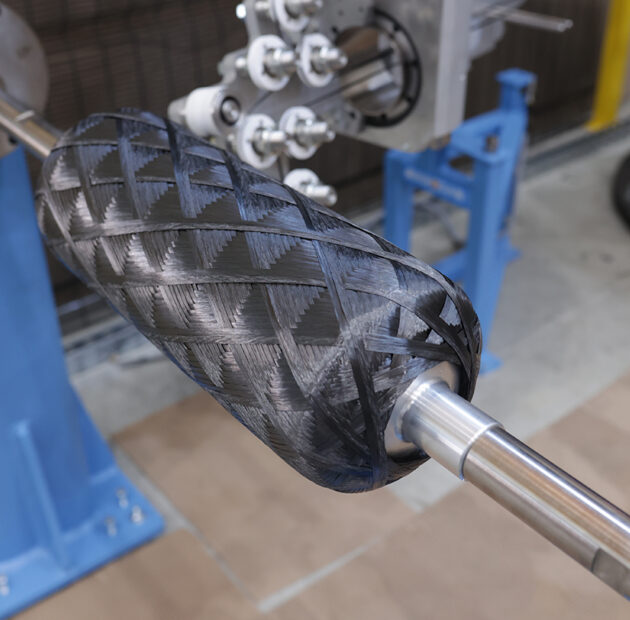
photo: Towpreg robotic filament winding machine
Towpreg manufacturing is evolving rapidly to meet the increasing demand for high-performance and lightweight composite materials. A growing number of industries are seeking higher volumes of towpreg, along with mounting pressure to reduce production costs. based on extensive field experience, a clear trend is emerging; companies are conducting more in-house developments in testing and production of towpreg to increase output and gain better control over quality and cost in composite part production. This is particularly evident in aerospace, defence and transportation applications, where manufacturing efficiency and precision are paramount. Towpreg materials are widely used in the production of composite pressure vessels, for space or hydrogen storage, dynamically loaded parts such as shaft s and springs, structural components like pipes and rotors, and in emerging applications like electric motors and eVTOL vehicles. Consistent quality, faster cycle times and mechanical performance remain key drivers of towpreg adoption across transportation, automotive, aerospace, energy and industrial sectors.
Understanding towpreg technology
Towpreg – short for “tow pre-impregnated” – refers to continuous fibre, typically carbon or glass, impregnated with a precisely controlled amount of resin. This ensures even resin distribution and results in predictable, uniform mechanical properties, which are critical in safety-sensitive and high-performance components such as pressure vessels or aerospace structures. Towpreg manufacturing generally involves 4 stages: fibre preparation, resin impregnation, partial curing (B-stage) and spooling. Accurate control of the fibre-to-resin ratio at every step is essential. Modern equipment must offer high levels of flexibility, precision and repeatability to maintain consistent production standards.
Step-by-step overview of towpreg manufacturing
Mikrosam has developed modular and scalable towpreg production lines tailored for various industrial needs. One example delivered to a customer in Asia integrates several essential components into a compact automated cell.





 Lu public network security: 37140202000173
Lu public network security: 37140202000173



